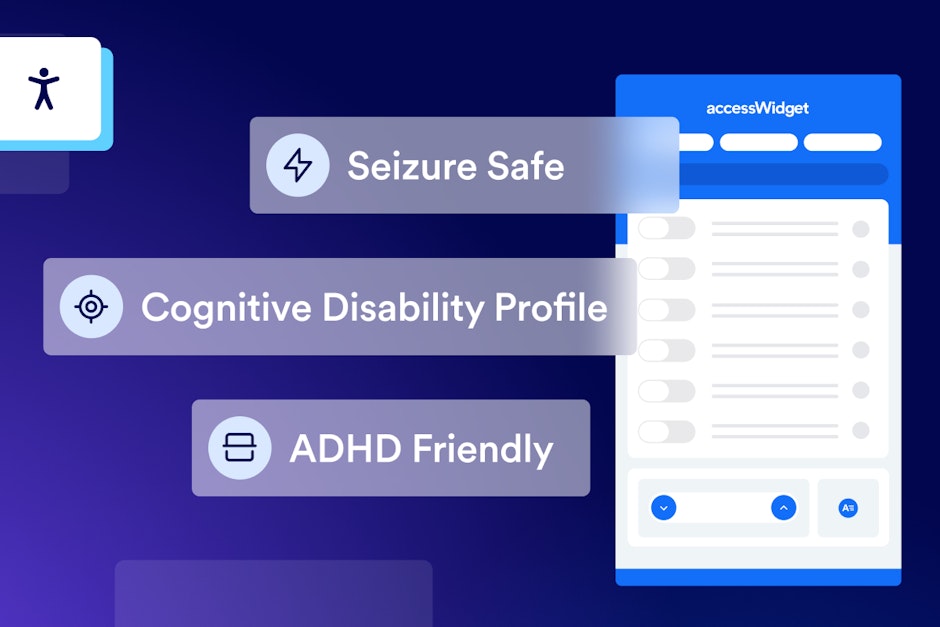Why it’s crucial for agencies to help their clients include invisible disabilities online
Making websites accessible to people with disabilities is becoming a more common practice across certain sectors and industries

Invisible disabilities, or hidden disabilities, are often more overlooked in comparison because they can’t be identified by the naked eye or at first glance. The umbrella term of “invisible disabilities” includes neurological, cognitive, and learning disabilities such as autism, epilepsy, dyslexia, or ADHD, but chronic illnesses like mental health disorders, diabetes, and sleep disorders fall underneath the category, as well. In fact, it’s estimated that 10% of people in the US have a medical condition that could be considered a type of invisible disability. This statistic is likely to be higher than documented because many people with invisible disabilities do not self-disclose their disabilities.
Many also don’t realize that the Americans With Disabilities Act protects invisible disabilities and medical conditions just as it does physical disabilities. But, compliance is not the main reason to make sure your clients’ websites are accessible to everyone. Besides the simple fact that it’s the right thing to do, there are also immense benefits that come along with an accessible site, admittedly, and we’ll touch upon those a bit later. First, let’s look at a few web accessibility practices that make websites inclusive.
What makes a site accessible for people with invisible disabilities?
There are more than several web accessibility practices and elements that make your clients’ websites safe and welcoming to those with invisible disabilities. Here’s a rundown on a few of the major ones:
- Paused graphics: It’s important to limit the movement and flashing images of digital media for users with ADHD who are easily distracted and for users with epilepsy, who could be photosensitive and experience seizures, media set to audio-play should also be avoided.
- Clean title and heading structure: title and heading structures that are clean and distinctive allow users with learning or cognitive disabilities to focus on what they’re reading without content overload, and proper structure also offers simpler navigation.
- Simplified navigation functions: building keyword search bars, category pages, posts, and link tags at the end of pages lets those with an invisible disability have a better user experience that is free of delay or disruption when finding desired content.
- Readable fonts and language: all written content needs to be legible and easy to understand for those who are on the spectrum or have another learning disability; this means avoiding complicated slang and using fonts that are enlarged and in proper contrast to the color background of the website.
- Prevent website clutter: the use of white space should be prioritized to avoid busyness and cognitive overload on a website; this ensures that those with neurological, cognitive, and learning disabilities can browse safely and pleasantly to the eye.
Now that we’ve covered some essential adjustments, you might be wondering where your website stands in regard to web accessibility levels. Find out with accessiBe’s free auditing tool that gives you a full report in just a few seconds.
The benefits of making my clients’ websites all-around inclusive
Let’s get back to those benefits we mentioned earlier. Your clients’ businesses can flourish by doing the right thing by way of an accessible website that ensures the inclusion of those with invisible disabilities online:
- Promoting inclusion and awareness: most importantly, operating an accessible website for your clients and you as an agency, promotes awareness and inclusion for all of the disability communities. The growing number of accessible websites only sets a standard for how the internet should look and feel for those with disabilities, and you can be a part of the change.
- Gaining trust from the community: if you and your clients create a safe space online for people with invisible disabilities, chances are, you’ll boost the reputation of your clients’ businesses and gain trust from the community. Being known as an inclusive brand will do great wonders for word-of-mouth advertising which, in turn, leads to…
- Added consumer or user loyalty: your new audience, which remains 10% of the US population, will realize that your website is accessible and come back to it in the future. That’s a large demographic you don’t want to exclude from the digital market or your clients’ websites. Widening your customer base is a commonly known benefit of web accessibility practices, but what people fail to remember is that this new user base will stay committed to those who remain resolved to online inclusion.
- Fulfilled compliance requirements: for peace of mind, make sure that those with medical conditions and invisible disabilities can navigate your website without disruption to mitigate further legal risk. Complying with the ADA means making your website available and open to every type of disability, so don’t let your clients forget about the Web Content Accessibility Guidelines that are specifically designed for invisible disabilities.
Including people with invisible disabilities is another step in the right direction
Your clients must remember to include invisible disabilities in their website’s digital experiences and not just because they are required to comply with the ADA. Your clients need to include everyone with invisible disabilities because it’s really just the right thing to do. And, while it creates a safer space on the internet, you can help your clients’ businesses thrive and grow due to the added benefits of web accessibility.
*Ready to make sure that your clients’ websites are open to all people, regardless of disability type or ability? accessiBe’s AI-powered web accessibility solution can help you and your clients achieve just that.

